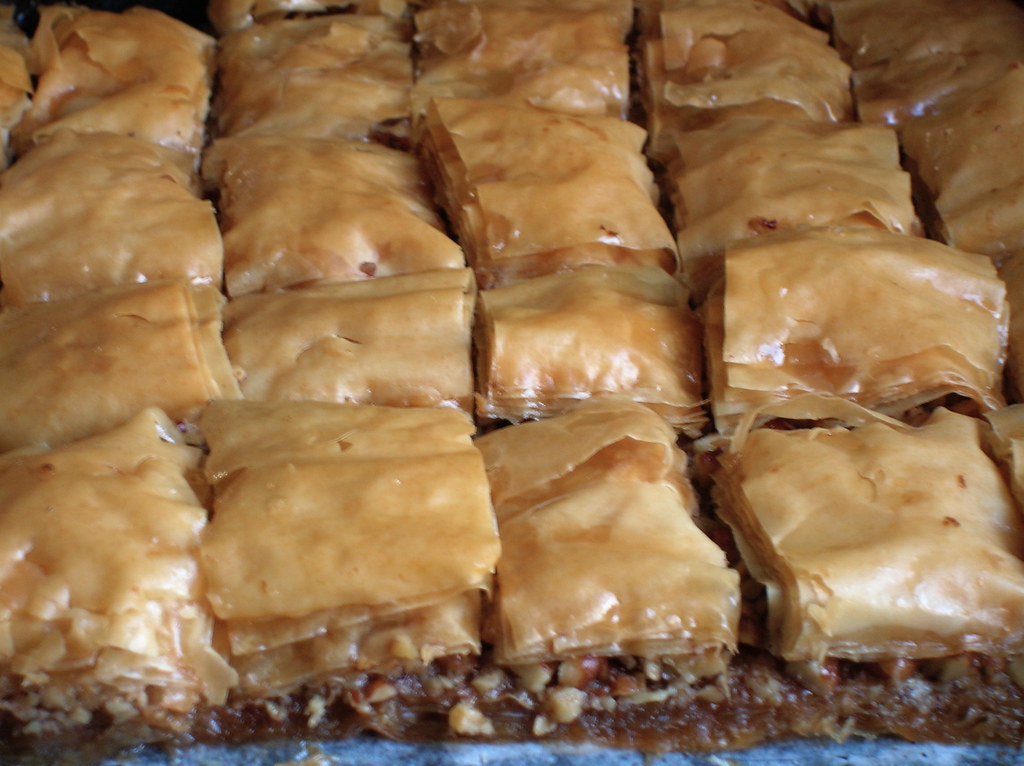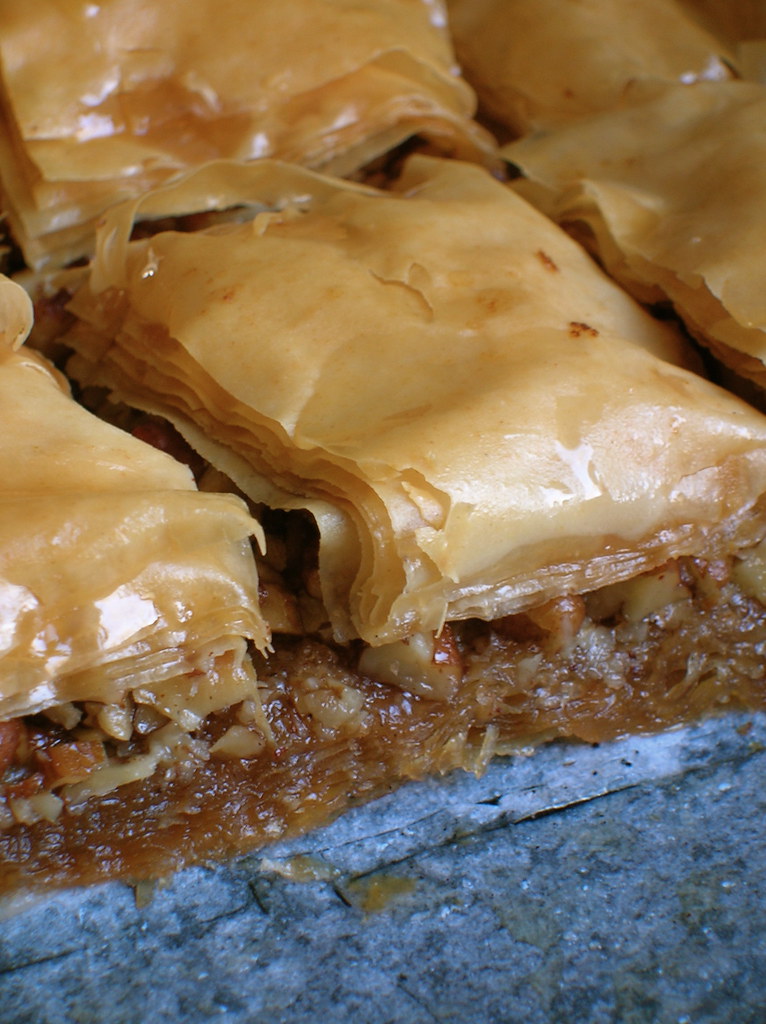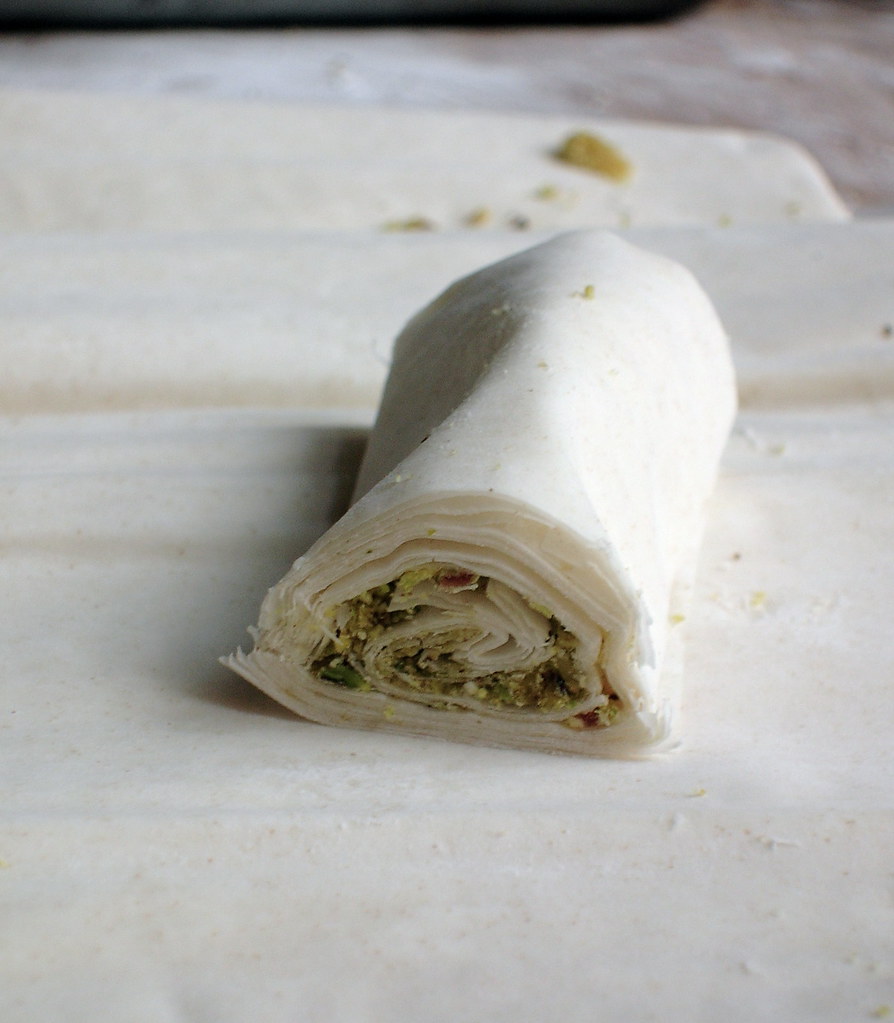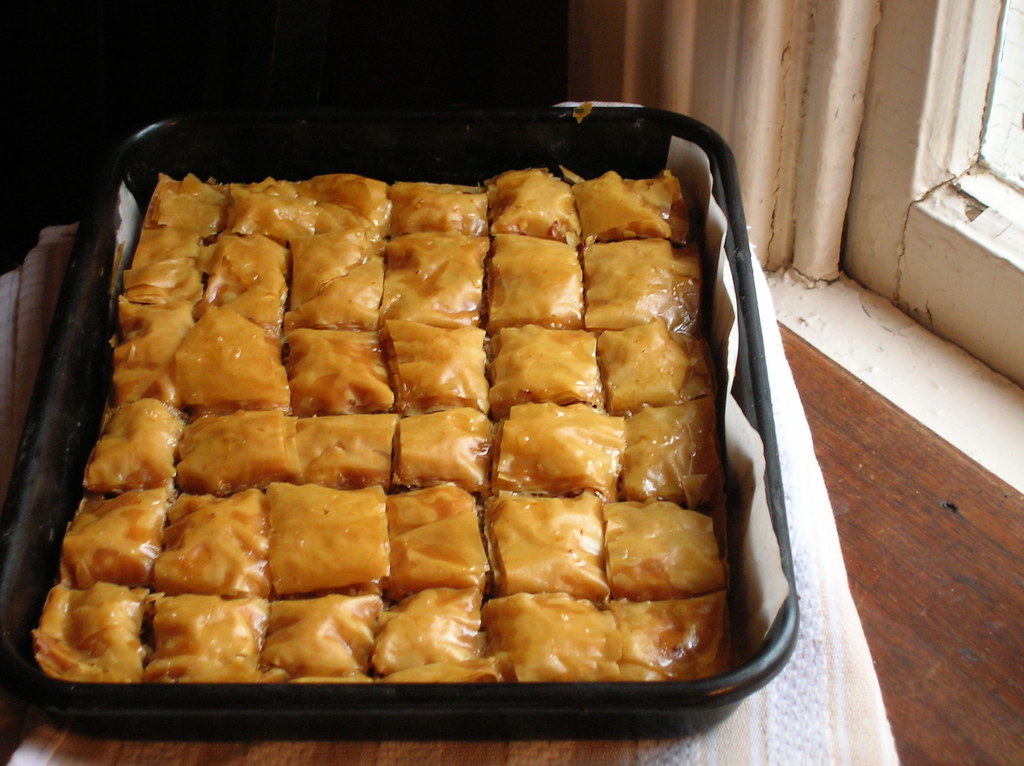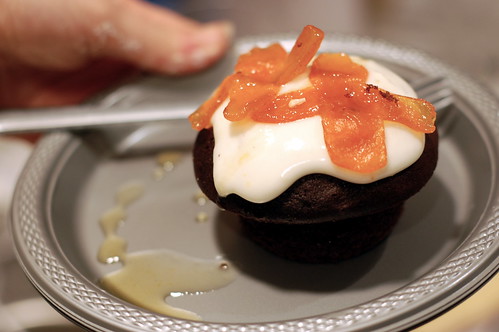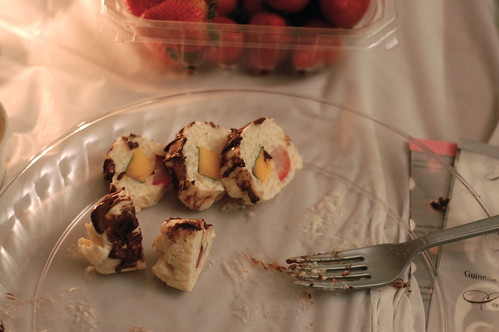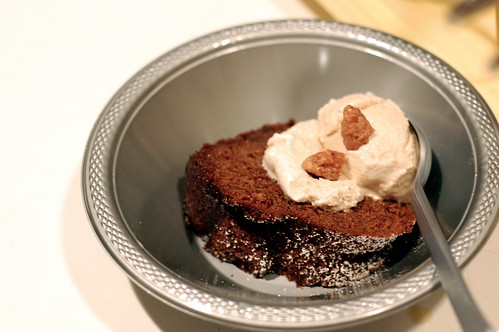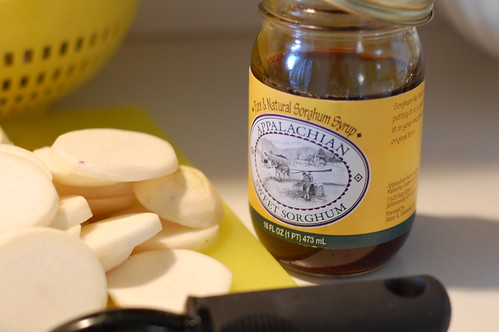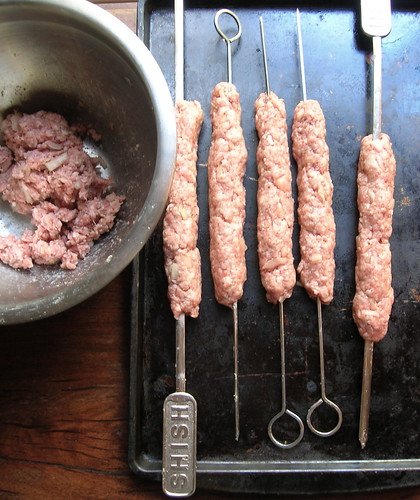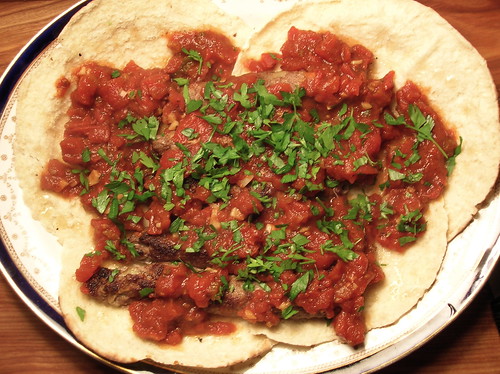 Do you ever have those recipes that you just know are going to be perfect and easy and delicious, so you immediately clip them or bookmark them, only to have them sit and linger for months, years even, waiting to live up to their (I know this is sooo delicious) potential? And then, when you finally, finally, get around to making them, you realize they weren't so easy or tasty after all?
Do you ever have those recipes that you just know are going to be perfect and easy and delicious, so you immediately clip them or bookmark them, only to have them sit and linger for months, years even, waiting to live up to their (I know this is sooo delicious) potential? And then, when you finally, finally, get around to making them, you realize they weren't so easy or tasty after all?This recipe for Seven Layer Salmon Bites was one of those recipes- oh don't get me wrong, it was really delicious, but it was also a little trickier than I had imagined. I've been wanting to make them ever since I saw the gorgeous photo in Gourmet a couple years ago, they just looked so festive and pretty with their spunky salmon roe topping, I could already picture them at my next dinner party. Apparently, it took me two years to come up with an occasion to make them. And even then I couldn't get any decent salmon roe, after trying numerous groceries including Eastern Market, Black Salt, and there was no way I was braving traffic to get to Dean and Deluca (damn you D.C., sometimes you are so inaccessible!!) but I think it was just as good without.
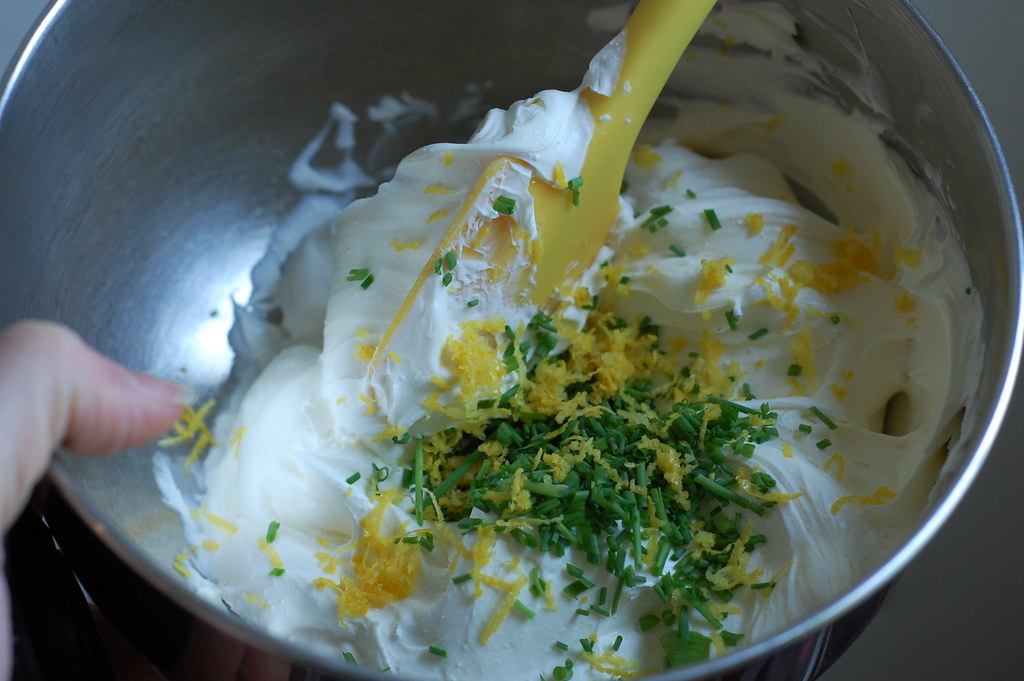 But I had the salmon and the pumpernickel and I stirred up the cream cheese mixture, which flecked with chives and lemon zest and pepper was positively finger-licking good. Then all I had to do was layer it up, chill, and slice. Except (except!) have you ever tried to spread a very sticky cream cheese mixture over a matrix of bread slices? Or over slippery salmon? Yeah, let me just say not the easiest thing I ever did. The cream cheese kept sticking to and dislodging the bread, the salmon was sliding around, and I of course, was cursing like a sailor. In the recipe's defense, it calls for whipped cream cheese and I had used regular, but in my defense the quantities in the recipe were rather off, and I finally solved the cream cheese problem by thinning the mixture with some heavy cream.
But I had the salmon and the pumpernickel and I stirred up the cream cheese mixture, which flecked with chives and lemon zest and pepper was positively finger-licking good. Then all I had to do was layer it up, chill, and slice. Except (except!) have you ever tried to spread a very sticky cream cheese mixture over a matrix of bread slices? Or over slippery salmon? Yeah, let me just say not the easiest thing I ever did. The cream cheese kept sticking to and dislodging the bread, the salmon was sliding around, and I of course, was cursing like a sailor. In the recipe's defense, it calls for whipped cream cheese and I had used regular, but in my defense the quantities in the recipe were rather off, and I finally solved the cream cheese problem by thinning the mixture with some heavy cream.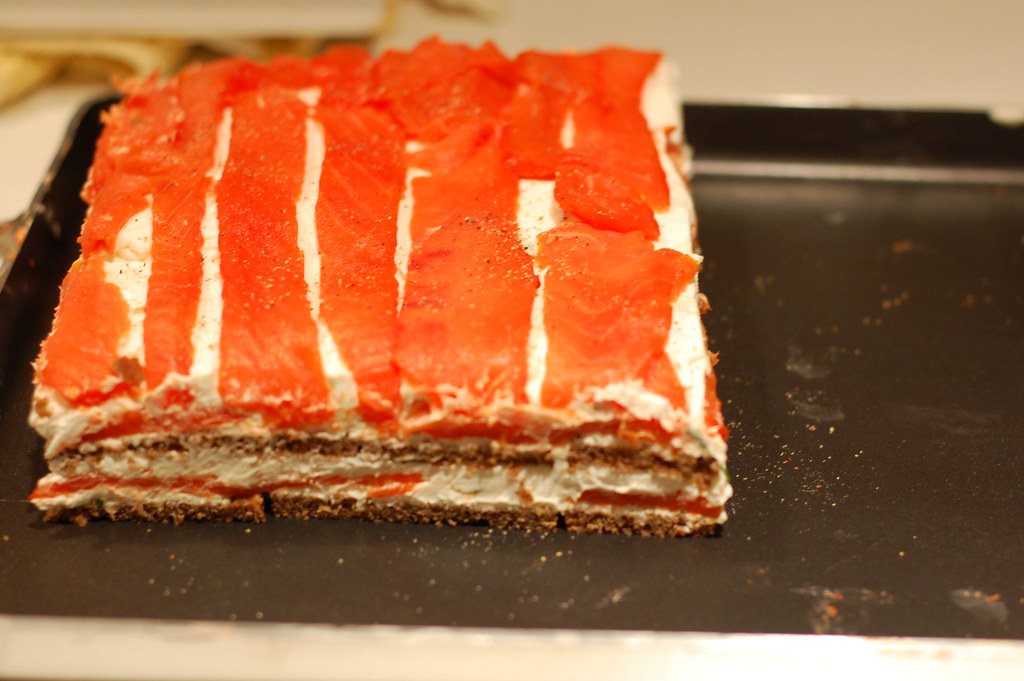 I realize these are small quibbles, but the difference between an easily assembled dish and a frustrating one is often the difference between whether something is adopted with regularity into one's kitchen. And with a few small tweaks, this is a dish that should be adopted into your kitchen. I know salmon-cream cheese canapes are nothing new, but the extra layering effect makes them a bit more special. They disappeared so fast at the party I made a few more later in the week just for myself. So go ahead, bookmark the recipe, I promise this version really is easy and delicious. And please don't wait two years to make it.
I realize these are small quibbles, but the difference between an easily assembled dish and a frustrating one is often the difference between whether something is adopted with regularity into one's kitchen. And with a few small tweaks, this is a dish that should be adopted into your kitchen. I know salmon-cream cheese canapes are nothing new, but the extra layering effect makes them a bit more special. They disappeared so fast at the party I made a few more later in the week just for myself. So go ahead, bookmark the recipe, I promise this version really is easy and delicious. And please don't wait two years to make it. Nine Layer Salmon Bites
Nine Layer Salmon Bites16 oz cream cheese, preferably whipped type, at room temperature
4 tablespoons heavy cream
1/4 cup chopped chives, plus more for garnish
zest of 1 lemon
several good crackings of black pepper
9 oz thinly sliced smoked salmon
6-8 slices thinly sliced pumpernickel bread
1. Cream together the cream cheese, heavy cream, chives, lemon zest, salt and pepper until smooth and spreadable.
2. Trim the bread slices to squares or rectangles and lay them in a jelly roll pan to form approximately a 16 by 9 inch rectangle, or about 2/3 of the jelly roll pan. Spread 1/2 of the cream cheese mixture over the bread slices. Layer half of the salmon slices on top. Repeat making another layer of cream cheese than another layer of salmon.
3. Slice the entire rectangle in half width-wise to form two squares. Use two large spatulas to transfer one square on top of the other (so it is now double-height). Press down gently then refrigerate the stack for at least half an hour in order for it meld together.
4. Remove from the fridge and using a sharp knife cut into small bites, wiping the knife after each cut. Garnish with chopped chives. Chill until ready to serve.


